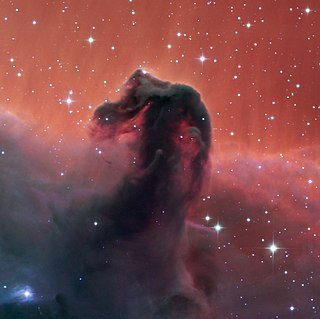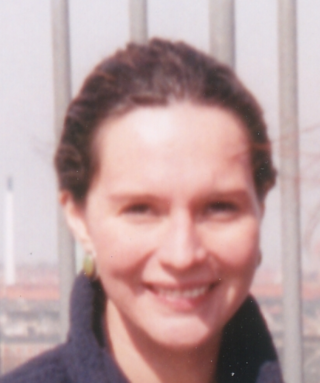Related Research Articles

The Kitt Peak National Observatory (KPNO) is a United States astronomical observatory located on Kitt Peak of the Quinlan Mountains in the Arizona-Sonoran Desert on the Tohono Oʼodham Nation, 88 kilometers (55 mi) west-southwest of Tucson, Arizona. With more than twenty optical and two radio telescopes, it is one of the largest gatherings of astronomical instruments in the Earth's northern hemisphere.

Annie Jump Cannon was an American astronomer whose cataloging work was instrumental in the development of contemporary stellar classification. With Edward C. Pickering, she is credited with the creation of the Harvard Classification Scheme, which was the first serious attempt to organize and classify stars based on their temperatures and spectral types. She was nearly deaf throughout her career after 1893, as a result of scarlet fever. She was a suffragist and a member of the National Women's Party.

Helen Battles Sawyer Hogg was an American-Canadian astronomer who pioneered research into globular clusters and variable stars. She was the first female president of several astronomical organizations and a scientist when many universities would not award scientific degrees to women. Her scientific advocacy and journalism included astronomy columns in the Toronto Star and the Journal of the Royal Astronomical Society of Canada. She was considered a "great scientist and a gracious person" over a career of sixty years.

The National Optical Astronomy Observatory (NOAO) was the United States national observatory for ground-based nighttime ultraviolet-optical-infrared (OUVIR) astronomy. The National Science Foundation (NSF) funded NOAO to provide forefront astronomical research facilities for US astronomers. Professional astronomers from any country in the world could apply to use the telescopes operated by NOAO under the NSF's "open skies" policy.

The Horsehead Nebula is a small dark nebula in the constellation Orion. The nebula is located just to the south of Alnitak, the easternmost star of Orion's Belt, and is part of the much larger Orion molecular cloud complex. It appears within the southern region of the dense dust cloud known as Lynds 1630, along the edge of the much larger, active star-forming H II region called IC 434.
The Annie Jump Cannon Award in Astronomy is awarded annually by the American Astronomical Society (AAS) to a woman resident of North America, who is within five years of receipt of a PhD, for distinguished contributions to astronomy or for similar contributions in related sciences which have immediate application to astronomy. The awardee is invited to give a talk at an AAS meeting and is given a $1,500 honorarium. The award is named in honor of American astronomer Annie Jump Cannon.
Catharine "Katy" D. Garmany is an astronomer with the National Optical Astronomy Observatory. She holds a B.S. (astrophysics), 1966 from Indiana University Bloomington; and a M.A. (astrophysics), 1968, and Ph.D. (astronomy), 1971, from the University of Virginia. Catharine's main areas of research are massive stars, evolution and formation; astronomical education.
Lisa Jennifer Kewley is an Australian Astrophysicist and current Director of the Center for Astrophysics | Harvard & Smithsonian. Previously, Kewley was Director of the ARC Centre of Excellence for All Sky Astrophysics in 3-D and ARC Laureate Fellow at the Australian National University College of Physical and Mathematical Sciences, where she was also a Professor. Specialising in galaxy evolution, she won the Annie Jump Cannon Award in Astronomy in 2005 for her studies of oxygen in galaxies, and the Newton Lacy Pierce Prize in Astronomy in 2008. In 2014 she was elected a fellow of the Australian Academy of Science. In 2020 she received the James Craig Watson Medal. In 2021 she was elected as an international member of the National Academy of Sciences. In 2022 she became the first female director of the Center for Astrophysics | Harvard & Smithsonian.

The Harvard Computers were a team of women working as skilled workers to process astronomical data at the Harvard College Observatory in Cambridge, Massachusetts, United States. The team was directed by Edward Charles Pickering and, following his death in 1919, by Annie Jump Cannon.
The women were challenged to make sense of these patterns by devising a scheme for sorting the stars into categories. Annie Jump Cannon's success at this activity made her famous in her own lifetime, and she produced a stellar classification system that is still in use today. Antonia Maury discerned in the spectra a way to assess the relative sizes of stars, and Henrietta Leavitt showed how the cyclic changes of certain variable stars could serve as distance markers in space.
Connie Walker (b. 1957) is an American astronomer and senior employee of the National Optical Astronomy Observatory (NOAO).

Alicia Margarita Soderberg is an American astrophysicist whose research focused on supernovae. She was an assistant professor of astronomy at Harvard University and a postdoctoral fellow at the Harvard-Smithsonian Center for Astrophysics.

Belinda Jane Wilkes is a Senior Astrophysicist at the Smithsonian Astrophysical Observatory (SAO) in Cambridge, Massachusetts, US, and former director of the Chandra X-ray Center.

Helen Dodson Prince was an American astronomer who pioneered work in solar flares at the University of Michigan.

Richard Frederick Green is an American astronomer, former director of the Kitt Peak National Observatory, UKIRT and the Large Binocular Telescope Observatory.
Laura A. Lopez is an associate professor of astronomy at Ohio State University studying the life cycle of stars. She was awarded the Annie Jump Cannon Award in Astronomy in 2016, which is awarded by the American Astronomical Society (AAS) for outstanding research and promise for future research by a postdoctoral woman researcher.
Emily Levesque is an American astronomer, author, and associate professor in the Department of Astronomy at the University of Washington. She is renowned for her work on massive stars and using these stars to investigate galaxy formation. She is also the author of three books, including the 2020 popular science book The Last Stargazers: The Enduring Story of Astronomy's Vanishing Explorers.

Smadar Naoz is an Israeli-American astrophysicist, and was the 2015 winner of the Annie Jump Cannon Award in Astronomy for her scientific contributions to the fields of cosmology and planetary dynamics.

Sidney Carne Wolff is an American astrophysicist, researcher, public educator, and author. She is the first woman in the United States to head a major observatory, and she provided significant contributions to the construction of six telescopes. Wolff served as Director of the Kitt Peak National Observatory (KPNO) and the National Optical Astronomy Observatory (NOAO). She is a member of the International Astronomical Union's Division G: Stars and Stellar Physics.
Lauren Ilsedore Cleeves is an American astrophysicist and an assistant professor in the Department of Astronomy at the University of Virginia. She is specialized in the study of protoplanetary disks.

Dara J. Norman is an astronomer and the deputy director of the Community Science and Data Center at the National Science Foundation's National Optical-Infrared Astronomy Research Laboratory (NOIRLab) in Tucson, Arizona. She is also the Association of Universities for Research in Astronomy Diversity Advocate at NOAO. Her research centers on the influence of Active Galactic Nuclei (AGN) on the evolution of galaxies. In 2020, she was inducted into the inaugural cohort of American Astronomical Society Fellows in recognition of her leadership and achievements.
References
- ↑ "NOAO Service". National Optical Astronomy Observatory . Retrieved December 1, 2018.[ permanent dead link ]
- ↑ "Panelist Biographies". Chandra X-ray Observatory . Retrieved December 1, 2018.
- ↑ "Annie Jump Cannon Award in Astronomy". American Astronomical Society . Retrieved December 1, 2018.